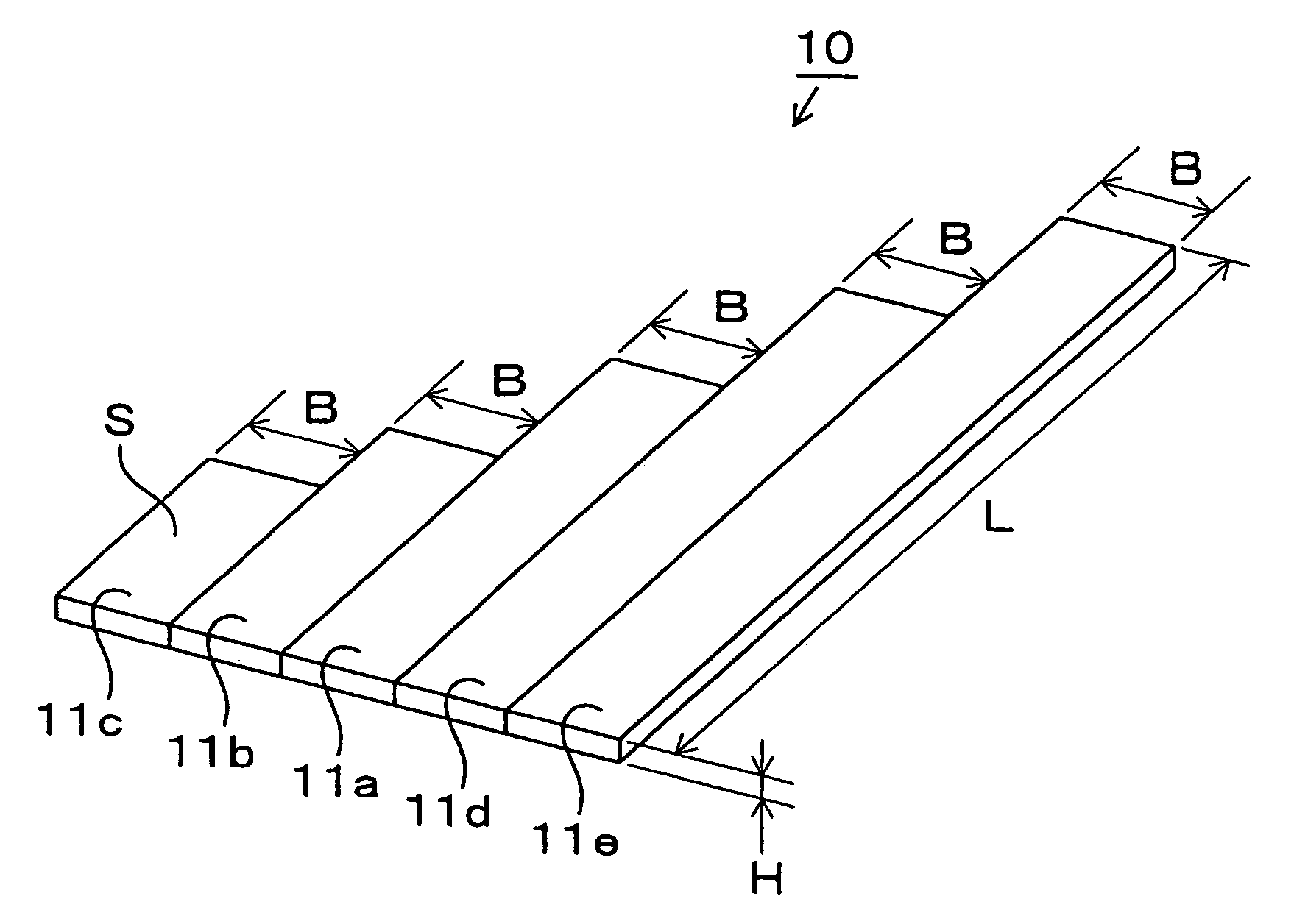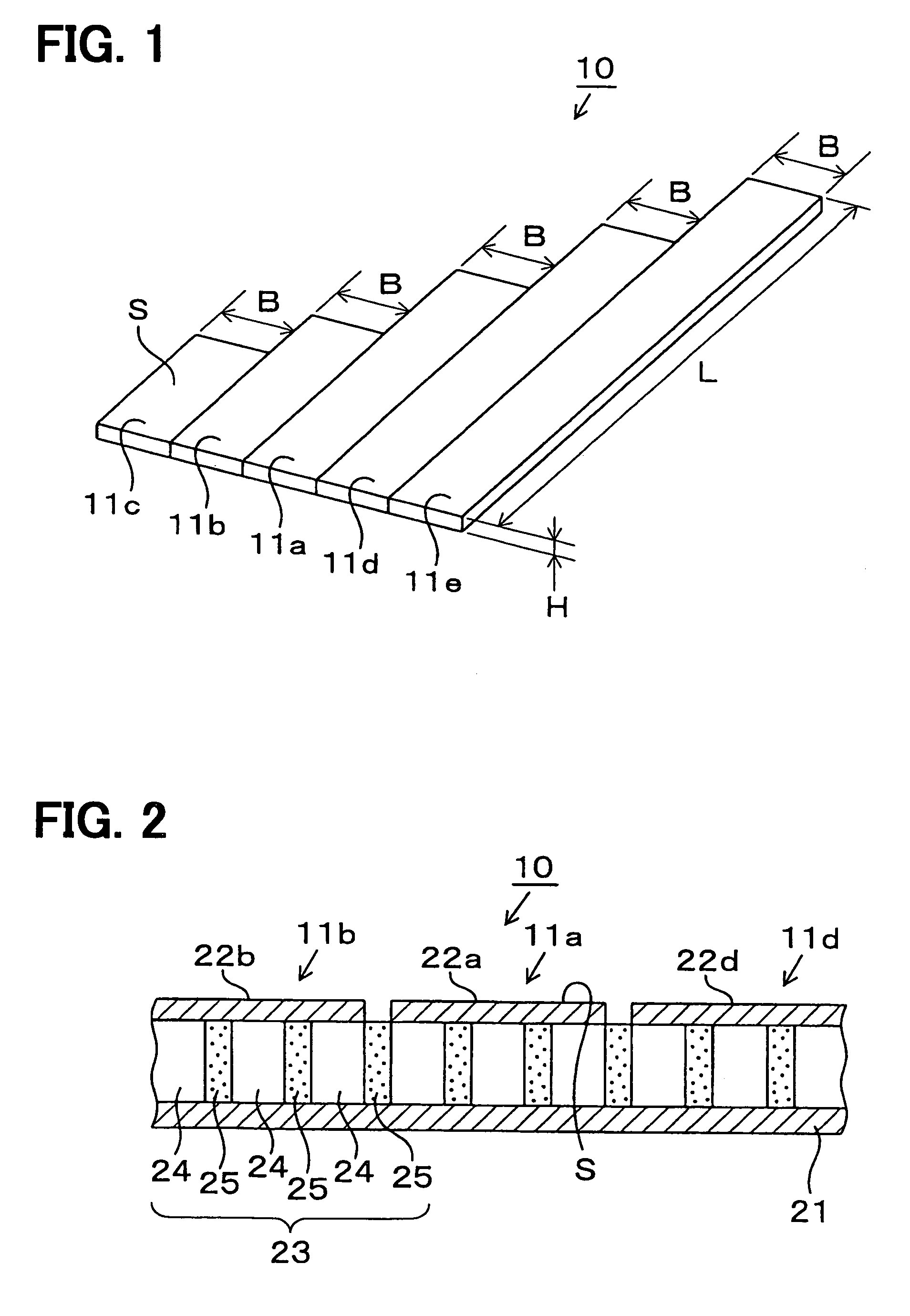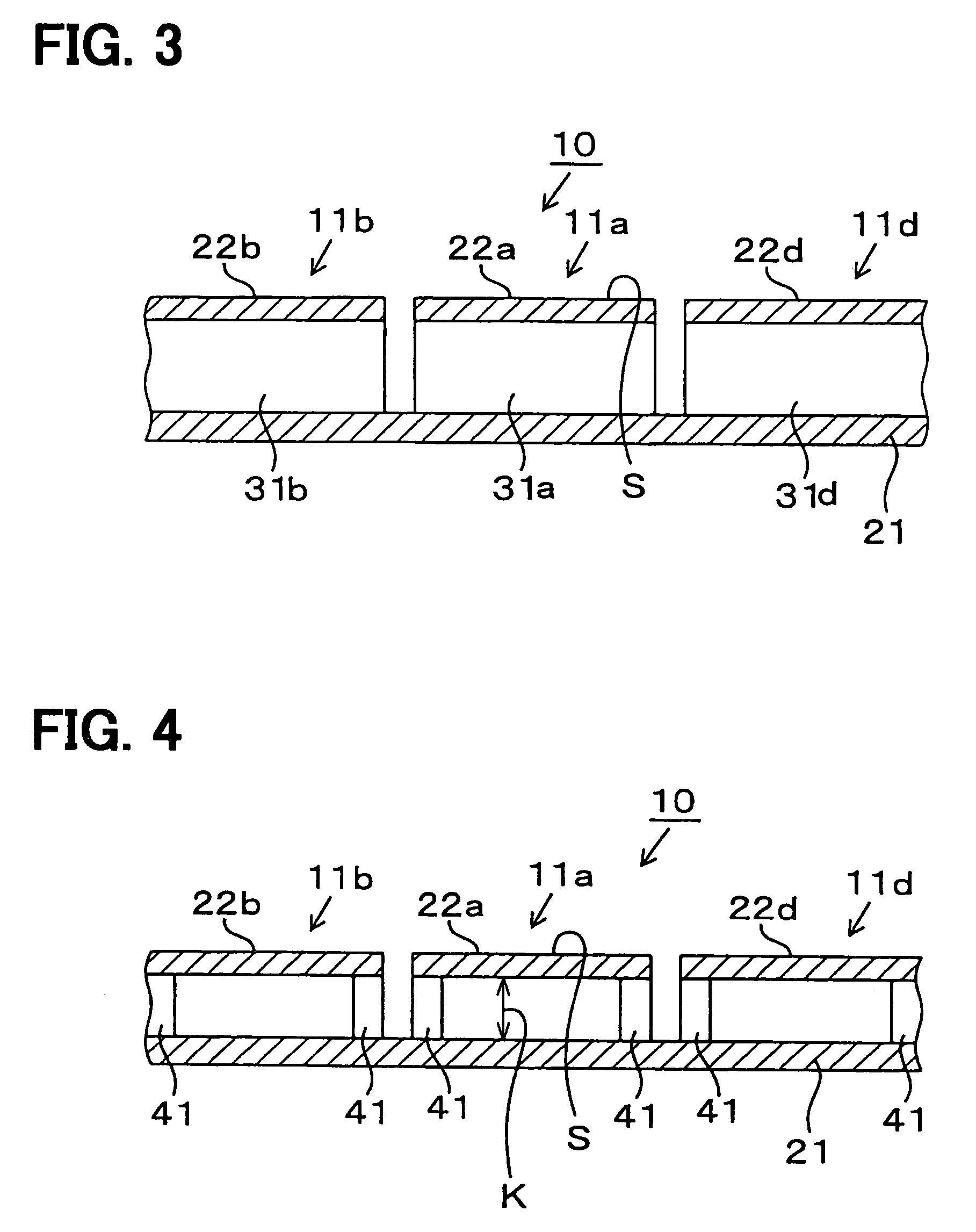Ultrasonic sensor
a technology of ultrasonic sensor and conversion device, which is applied in the field of ultrasonic sensor, can solve the problem that the manufacturing process of the receiver is not necessary, and achieve the effect of reducing the influence of vibration reducing the acoustic crosstalk among the conversion device, and improving the accuracy of detecting physical quantities of a target object for detection
- Summary
- Abstract
- Description
- Claims
- Application Information
AI Technical Summary
Benefits of technology
Problems solved by technology
Method used
Image
Examples
first embodiment
[Effect and Advantage of First Embodiment]
[0058]Hereafter effects and advantages of the ultrasonic sensor according to the first embodiment will be described.
[1-1]
[0059]A transmitter (not shown) of the ultrasonic sensor which is constructed separately of the receiver 10 transmits an ultrasonic signal to a target object for detection, and the reception elements 11a–11e of the receiver 10 receive the ultrasonic signal reflected by the target object.
[0060]The receiver 10 detects gaps among timings at each of which one of the reception elements 11a–11e receives the reflected ultrasonic signal. Then the receiver 10 determines the two-dimensional or three-dimensional position of the target object and a distance to the target object by comparing the detected gaps with the ultrasonic signal transmitted by the transmitter. The transmitter may be of any type, including the piezoelectric type and the capacitance type.
[1-2]
[0061]As shown in FIG. 5, the vibration plate fixed at its both ends has...
second embodiment
(Second Embodiment)
[0090]An ultrasonic sensor of a second embodiment is different from that of the first embodiment in that the ultrasonic sensor of the second embodiment has the receiver 50 shown in FIG. 8 in place of the receiver 10. As shown in FIG. 8, the receiver 50 includes five reception elements (i.e. conversion devices) 51a–51e, each of which has a shape of a flat rectangular plate.
[0091]The reception elements 51a–51e are arranged one-dimensionally on a plane with their reception surfaces S having the same surface level. Specifically, the reception surfaces S face the same direction and the reception elements 51a–51e are aligned with small intervals in the width direction thereof. In the alignment, each of a first longitudinal ends and a second longitudinal ends of the reception elements 51a–51e is aligned in a straight line, where the first longitudinal ends consist of longitudinal ends of the reception elements 51a–51e at a certain side of the reception elements 51a–51e, ...
third embodiment
(Third Embodiment)
[0119]An ultrasonic sensor of a third embodiment is different from that of the first embodiment in that the ultrasonic sensor of the third embodiment has the receiver 60 shown in FIG. 10 in place of the receiver 10. As shown in FIG. 10, the receiver 60 includes five reception elements (i.e. conversion devices) 61a–61e, each of which has a shape of a flat rectangular plate.
[0120]The reception elements 61a–61e are arranged one-dimensionally on a plane with their reception surfaces S having the same surface level. Specifically, the reception surfaces S face the same direction and the reception elements 61a–61e are aligned with small intervals in the width direction thereof. In the alignment, each of a first longitudinal ends and a second longitudinal ends of the reception elements 61a–61e is aligned in a straight line, where the first longitudinal ends consist of longitudinal ends of the reception elements 61a–61e at a certain side of the reception elements 61a–61e, a...
PUM
 Login to View More
Login to View More Abstract
Description
Claims
Application Information
 Login to View More
Login to View More - R&D
- Intellectual Property
- Life Sciences
- Materials
- Tech Scout
- Unparalleled Data Quality
- Higher Quality Content
- 60% Fewer Hallucinations
Browse by: Latest US Patents, China's latest patents, Technical Efficacy Thesaurus, Application Domain, Technology Topic, Popular Technical Reports.
© 2025 PatSnap. All rights reserved.Legal|Privacy policy|Modern Slavery Act Transparency Statement|Sitemap|About US| Contact US: help@patsnap.com



